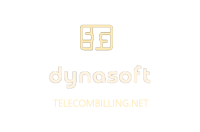How can we help you today?
Learn how to start using TelecomBilling.Net and how to enter the basic data it needs in order for it to run correctly.
In order to quickly start using your Telecom billing application and to grapple with the best way of entering all the data needed for TelecomBilling.Net to run correctly, please follow the strategy given here. Not all steps are required and these will depend on your business needs. Those that are not are marked ‘Optional’.
- Go to ‘Settings’ > ‘Configuration’ and fill in your company details and system options there.
- Go To ‘Settings’ > ‘Voice settings’ and identify the system-wide call types required and call groups.
- Go to ‘Assets’ and enter the system-wide subscriptions (i.e., items sold to customers or service charges), DDI/DIDs and SIMs (Optional).
- Go to ‘Data’ > ‘Price Lists’ and import your voice and services price lists.
- Go to ‘Data’ > ‘Price lists details’. Ensure all destinations have their dialling codes, call types and are activated.
- Go to the inventory page and tab (first in ‘Configuration > ‘Options 9’ > Options ‘9.A’ first, then in ‘Assets’) and enter all inventory settings and assets. Allocate the inventory assets with your customers by going to your customers accounts, then ‘Subscriptions and packages’ (Optional).
- Go to ‘Assets’ and enter the system-wide packages and link each with the call types these apply to, data parameters and subscriptions, inventory assets, DDI/DIDs or SIMs where required (Optional).
- Go to ‘Suppliers’ (‘Home’ menu) and enter each supplier along with their details, supplier-specific call types and voice/data and services CDR formats. If you have your own equipment or are not bothered about linking a supplier and their CDR formats, simply do the same but via ‘Settings’ > ‘CDR formats’.
- Enter all distributors (‘Home’ menu) next so these are available for linking with customers when customers are created in the next point (Optional).
- Enter all customers (‘Home’ menu) along with their SNs (DDIs, CLIs, phone or ANI numbers) and enter the customers’ subscriptions and packages by going to their accounts then ‘Subscriptions and packages’ in the drop-down menu at top right-hand corner.
- Finally, all the tools can now be configured (Optional).
If you prefer to import data in bulk via the import wizards, go to ‘Tools’ > ‘Import data’, then follow the steps given below. The format the import files have to follow is detailed in the manual, chapter 3.6.9.
- Import the customers
- Import their bank details
- Import their credit card details
- Import distributors and do the same for suppliers if you deal with suppliers
and, then:
- Import your CDR formats as per step #7 above
- Import the customers’ Service Numbers (SNs)
- Import general subscriptions, packages and inventory items and finally customer-specific ones
Dynasoft LTD
Copyright © 2007 – 2024


